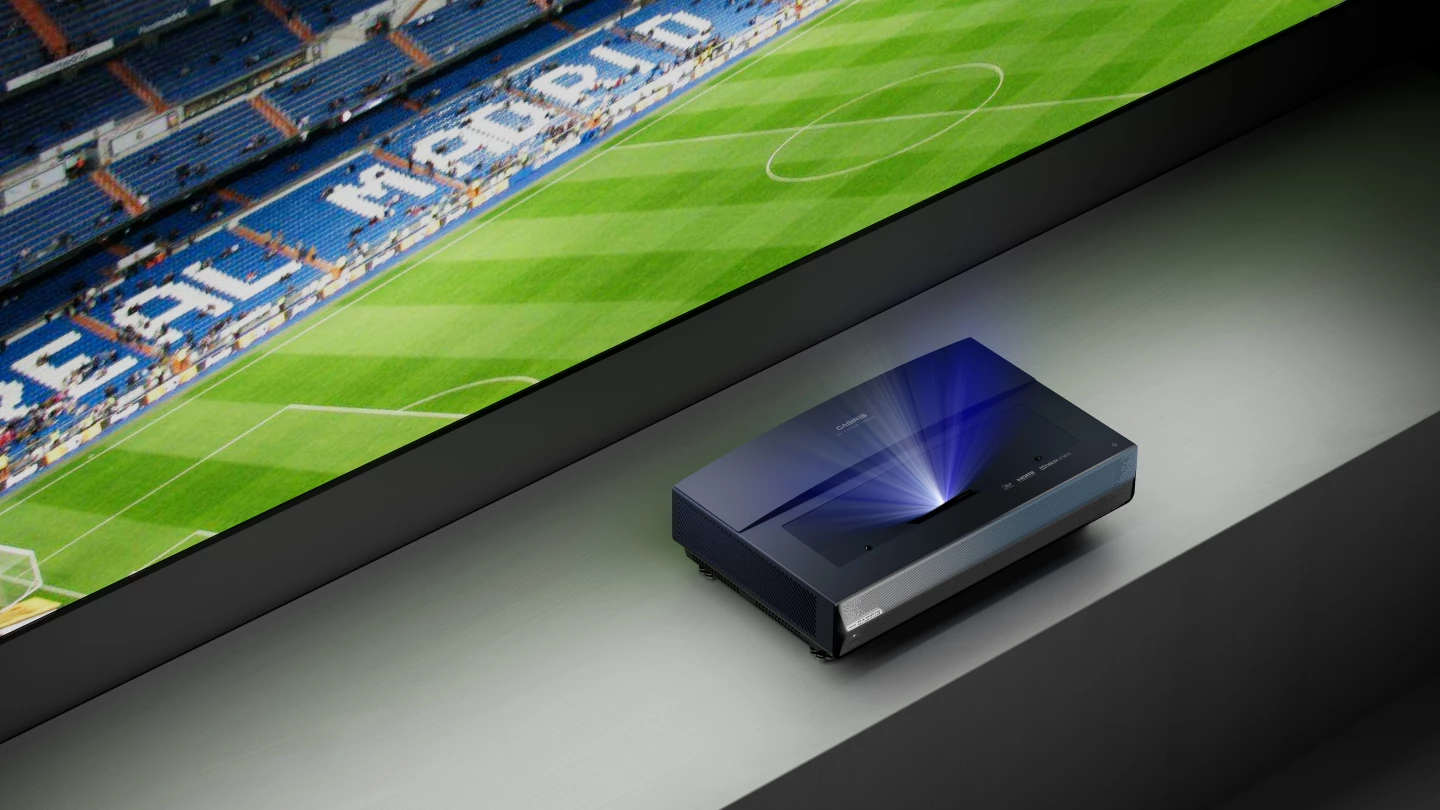Rather than employ fairly common ALDP laser technology for its upcoming all-in-one ultra-short-throw 4K projector, Casiris Tech has opted to use a separate laser for each RGB color for improved color accuracy.
The Casiris A6 UST projector has already been through a successful funding round on Kickstarter, and has now moved to Indiegogo In-Demand for a final pre-order push.
The triple-laser light source at the heart of the system allows the A6 to go beyond support for the Rec.709 and DCI-P3 color gamuts that many ALDP-based (or Advanced Laser Phosphor Display) models boast, and instead manages 107% of the wider BT.2020 color space, while also being compatible with HDR10 content.
As there's no color wheel in play here, the rainbow effect that can trouble ALDP projectors should also be nipped in the bud, and the light-source lifespan also gets a boost to 30,000 hours. One of the Indiegogo perks includes a 100-inch ambient-light-rejecting screen which, when combined with the projector's 2,200 lumens of brightness output, should allow for lights-on/daytime viewing too.

The recommended throw range is between 80 and 120 diagonal inches, but 4K UHD (3,840 x 2,160) visuals right up to 150 inches can be had by placing the back of the unit some 18 inches (45 cm) from the wall or screen. Eight-point keystone correction helps ensure tight onscreen angles, there's a built-in adjustment motor for the lens to bring the picture into focus using the remote, and motion compensation is cooked in to keep fast-action scenes sharp.
Dual-band 802.11ac Wi-Fi is included, along with Bluetooth 5.0, HDMI and USB. The A6 runs Android TV 10 out of the box for access to thousands of entertainment apps, including Prime Video and Disney Plus – and Netflix too.
The system sports a MediaTek 9629 system-on-chip with quad-core processing, integrated graphics, 3 GB of system memory and 32 GB of onboard storage. For gamers, connection lag is reported to get down to 35 milliseconds (though a refresh rate of 60 Hz might not be responsive enough for serious console gameplay). The UST projector also boasts a Dolby Atmos sound system rocking two 10-W speakers, with support for DTS HD.
The Casiris A6 has already raised US$317,543 over on Kickstarter and Indiegogo In-Demand perks start at $2,299 for the projector by itself, or $2,799 bundled with a 100-inch ALR screen. The usual crowdfunding cautions apply, but if all goes to plan, shipping is estimated to start from December.
Source: Casiris






